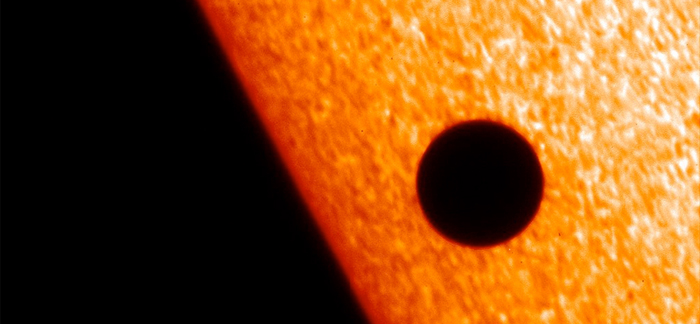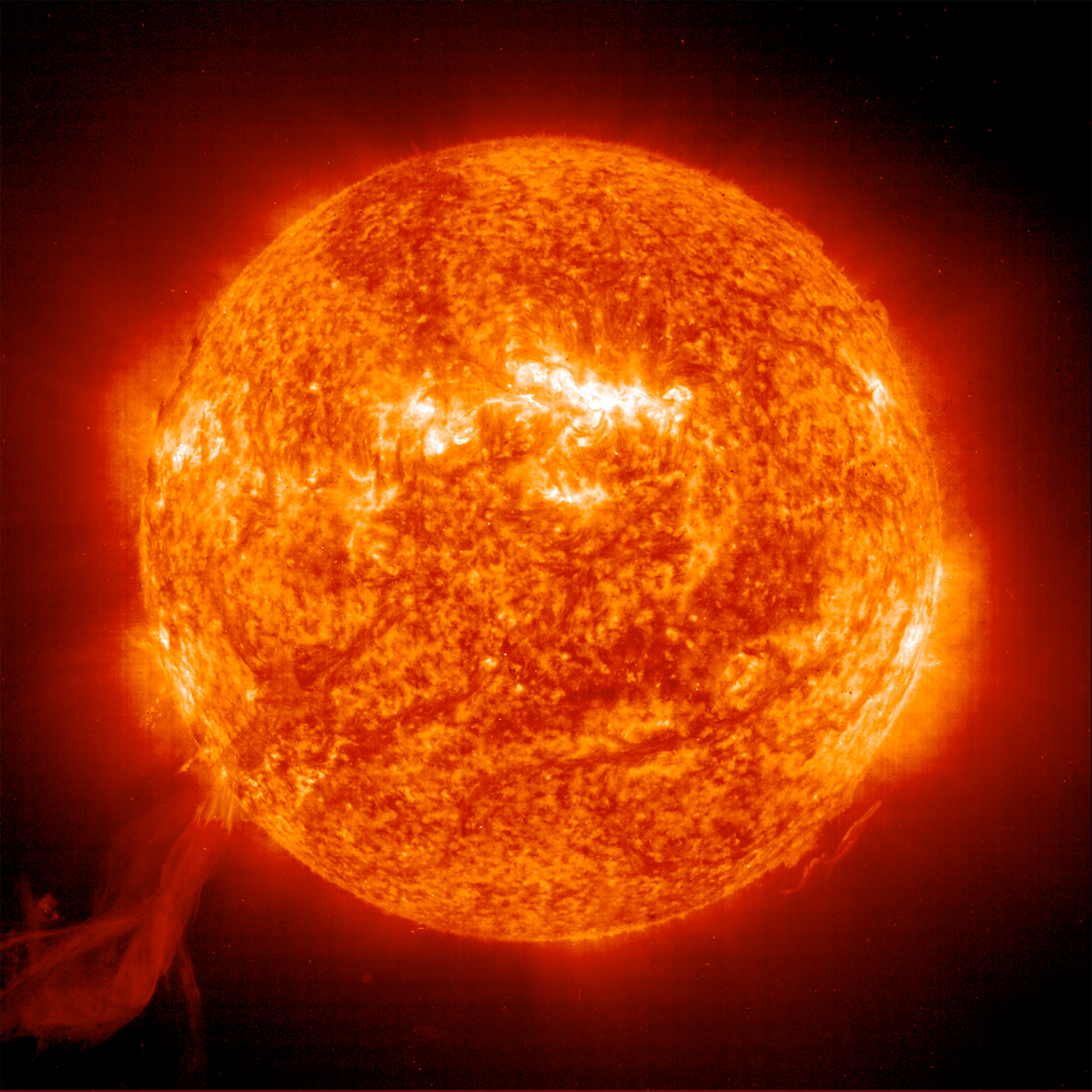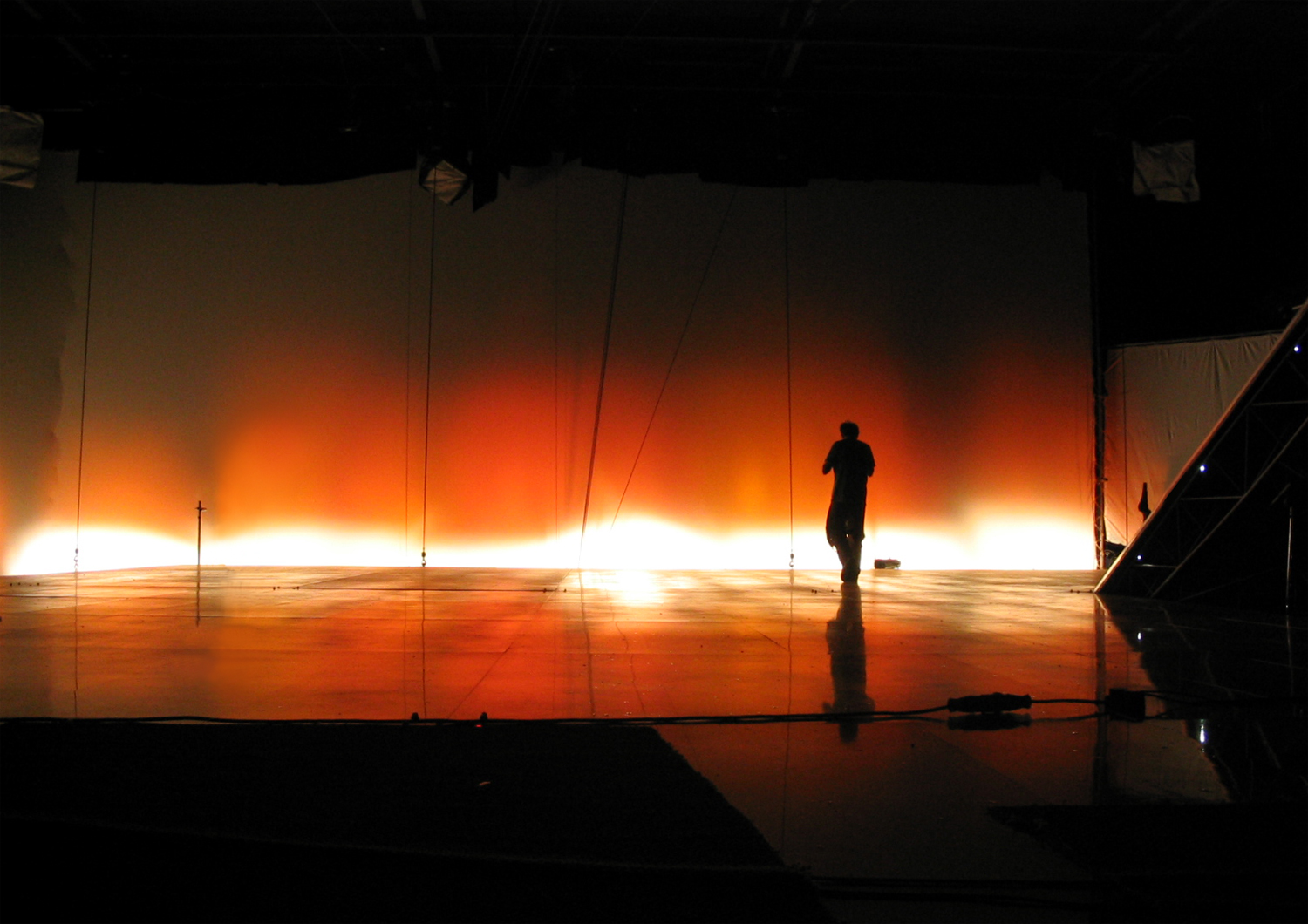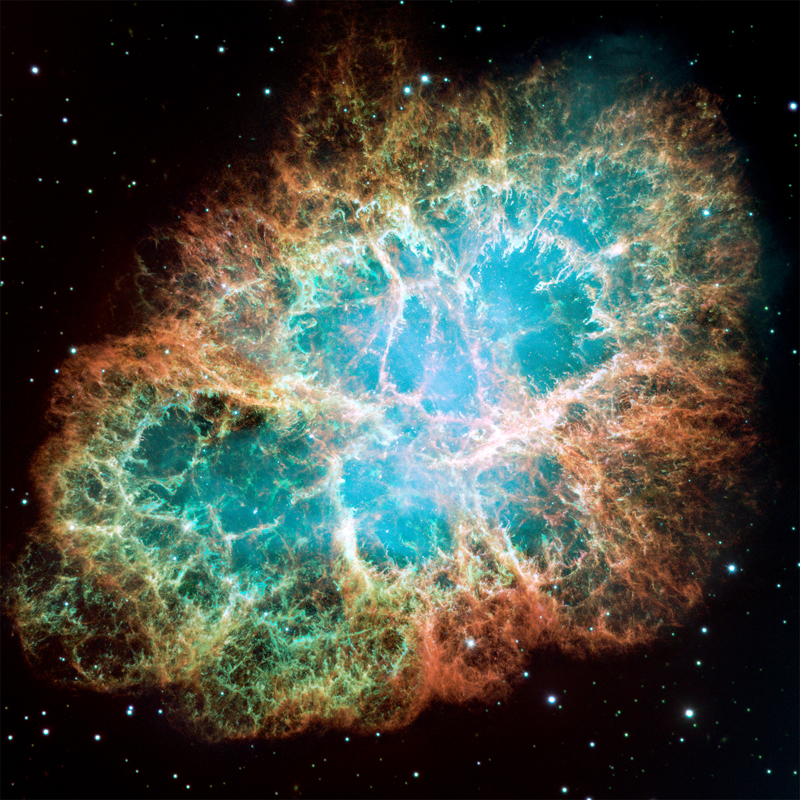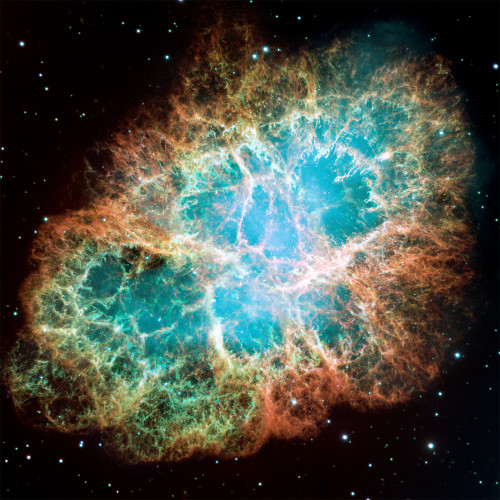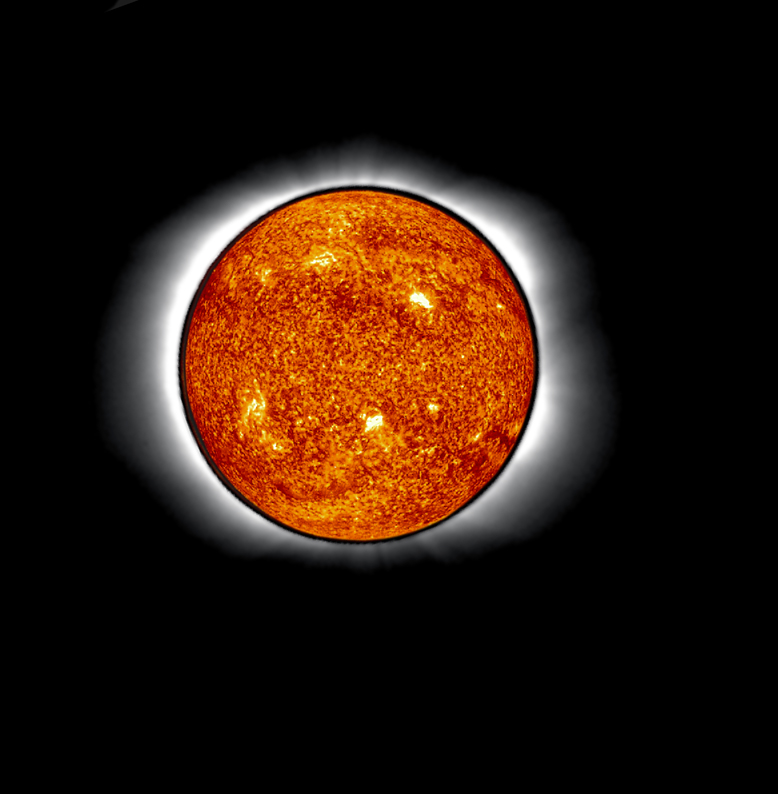The visual effects department are already putting together various scenes (I showed you a little taster yesterday) and will continue working for many months after filming has finished. I’ve seen several different sequences, most of them are still pretty rough, all of them are seriously cool. I’m hoping that Tom will sneak me some more to show you soon.
I think one of the more tricky bits of animation will be when we get close to the Sun. The spaceship’s shield has a diameter of 1.449 kilometres (I just asked the visual effects guys to measure it exactly for me), but let’s say 1.5 kilometres. That’s massive by Earth standards, but quite frankly puny when out in space. How, exactly, do you represent the size of the Sun, which has a diameter over 100 times that of the Earth’s, when the spaceship gets near it?
Get out your tape measure.
OK, 1 metre represents the Sun’s diameter. 1 centimetre represents the Earth’s diameter… The Earth’s actual diameter is 12,756.3 kilometres. The spaceship’s, as I said, is 1.5 kilometres… try and imagine 1/8500th of a centimetre ( 1 x 12756 ÷ 1.5= 8504)… Actually, go look at this. I’ve made a blue image 8,504 pixels wide and right in the middle I put a little one pixel square dot of yellow. Try and find it. That’s how big the spaceship’s diameter is compared to the Earth’s.
Now in this one, the yellow bit is the sun, the blue bit is the Earth. Everyone you know and everyone you don’t know, all the people falling in love, all the babies being born, all the people dying, all the music, every painting, book and film fits onto that dot.

The Sun is awesome beyond imagination… and the animators are going to have to imagine it.
I’ve got hold of some of the videos they are using as reference…
Mercury transit 2003
Venus transit 2004
Close-ups of the Sun
All movies are from Swedish Institute for Solar Physics

